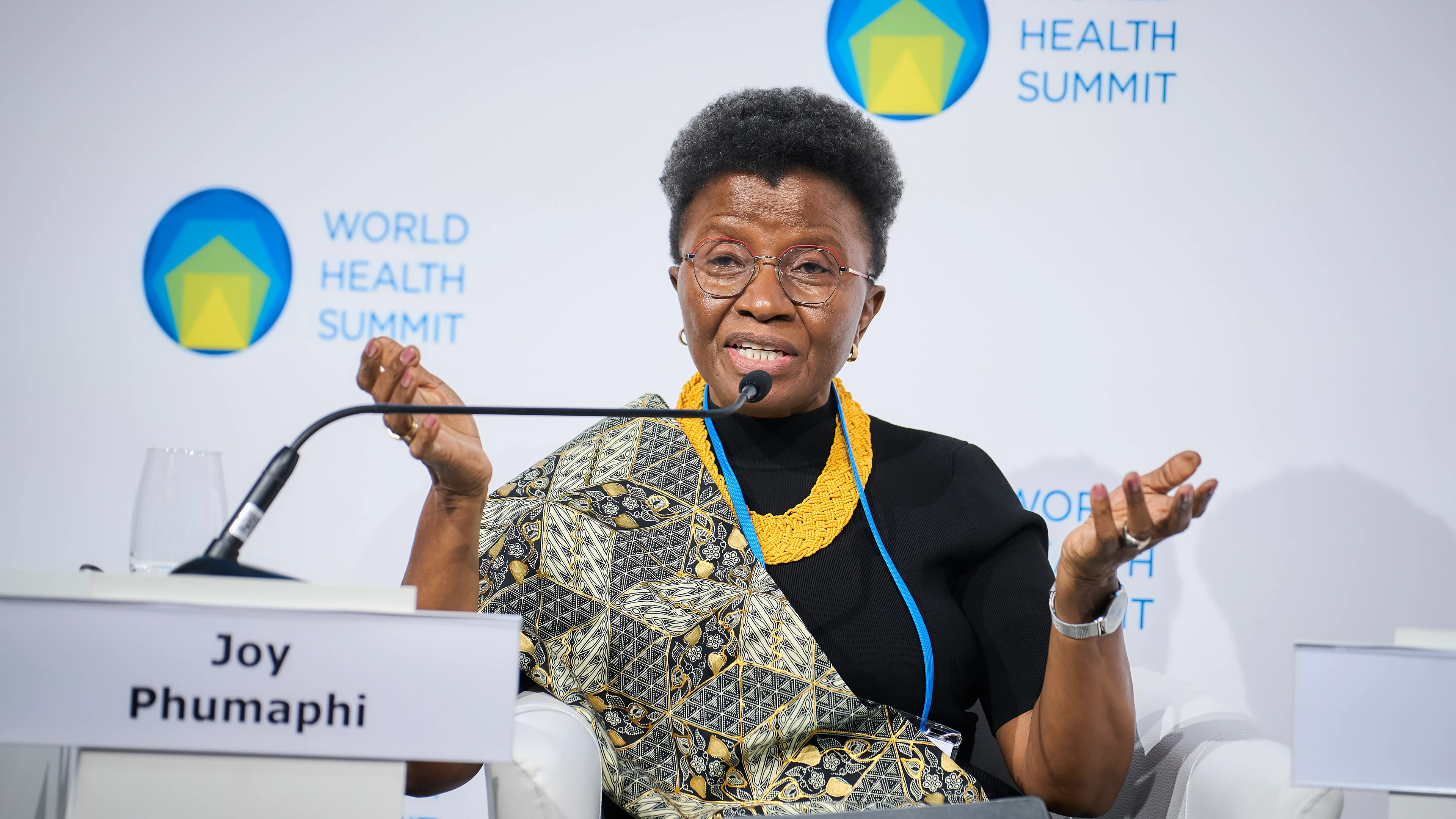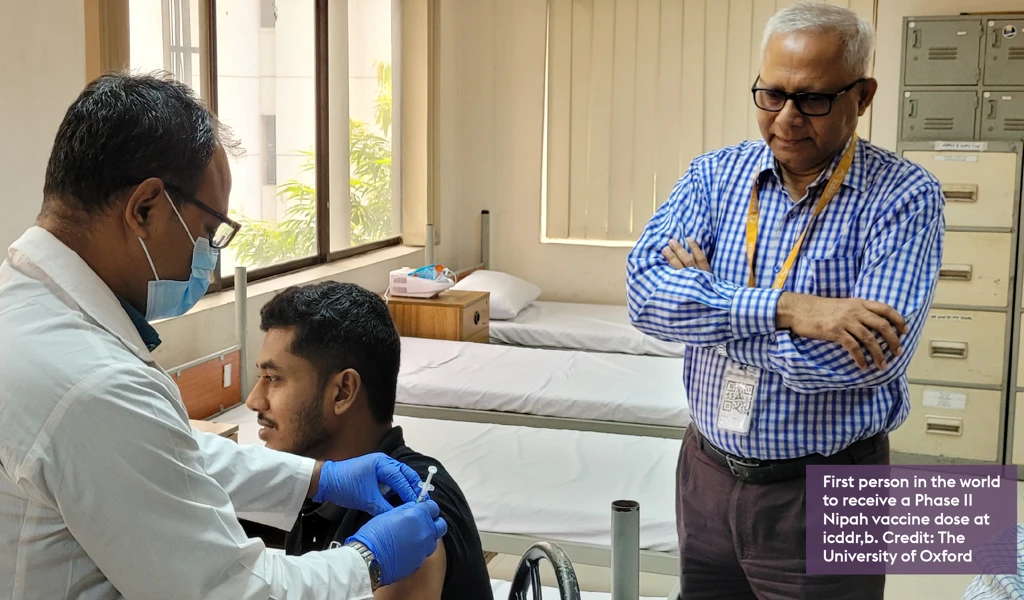This article is authored by Joy Phumaphi, Co-Chair of The Global Preparedness Monitoring Board.
As the world rebounds from the COVID-19 pandemic, one undeniable truth remains: another pandemic threat is not a matter of if, but when. While there is global acknowledgement that COVID-19 was a tragedy, this recognition has not yet translated into action with the scale, unity of purpose and agency that is required to prevent it from happening again.
Despite this outlook, there is room for cautious optimism. For the first time in history, we have the tools and resources needed to intercept a future outbreak before it spirals into a global pandemic, but only if we urgently secure the appropriate level of preparedness in advance.
DISEASE X: The 100 Days Mission to End Pandemics, written by CEPI's Kate Kelland, lays out a realistic strategy to face down a future pandemic threat by rapidly developing vaccines within a little over three months of an outbreak being identified. The 100 Days Mission, as it is known, is bold and ambitious, but it is feasible. It is also essential if we hope to avoid a repeat of the tragic vaccine inequity that marred much of the global COVID-19 response.
The 100 Days Mission is bold and ambitious, but it is feasible.
For example, if the 100 Days Mission timeline had been applied to COVID-19, vaccines would have reached the global community when 2.3 million people had been affected, rather than at day 326 when the first vaccines were delivered, and approximately 67.7 million people had been infected.
Such ambition will only be possible by first dismantling the entrenched inequities within our R&D and preparedness systems. We need a game changer to ensure innovations are accessible to all countries so that they can be better prepared to act if a threat emerges, ensuring the rapid delivery of safe and effective countermeasures to at-risk communities. Part of ensuring the success of the 100 Days Mission will also require universal and comprehensive surveillance systems, capable of genomic surveillance across every corner of the globe. This capacity needs to be fully integrated into all health system investments globally.
We know how we should prepare, and we know what needs to change, but a fundamental question remains: how prepared are we to face a future pandemic?
The Global Preparedness Monitoring Board (GPMB), for which I serve as Co-Chair, will release its 2023 Report on the state of the world's preparedness at the end of this month. For the first time, we implemented our Monitoring Framework, a diagnostic tool designed to uncover the most severe gaps in preparedness and underscore the urgent actions needed to address them.
In this year's assessment, we delved into indicators related to equity, including global R&D coordination, manufacturing capacity and innovation. The report found that while global spending on R&D is at a record high, amounting to approximately U$S1.7 trillion globally, it is concentrated in just ten countries that account for 80% of this investment. While only 3% of the 61,000 products in the development pipeline target R&D Blueprint priority pathogens identified by the World Health Organisation for their epidemic or pandemic potential. Further, although global pandemic vaccine manufacturing capacity has grown significantly in recent years, this capacity is concentrated in Southeast Asia, Europe and North America—which we know directly impacts equitable access to pandemic vaccines.
As such, though we have made incredible progress in the speed of innovation, much work remains to ensure that the most impactful technologies are delivered to those most in need.
At the same time, the GPMB also observed that many of the investments made during the COVID-19 pandemic are at risk of being lost, including for R&D and access to medical countermeasures in the developing world. Urgent action driven by collaboration and strong governance is imperative to preserve and build upon these investments, address gaps, and strengthen our end-to-end R&D system.
This cross-sectoral multi-stakeholder readiness will need to be underpinned by strong leadership and strengthened and sustainably funded health systems. Systems with the tools, technical and digital capacities to provide ongoing health care to populations who need to access these systems daily and not only in pandemic times, or times of outbreaks and emergencies.
Though we have made incredible progress in the speed of innovation, much work remains to ensure that the most impactful technologies are delivered to those most in need.
Indeed, preparedness is not simply about getting ready for something that will happen in the future. It is about building resilience, making better investments and building collaborations now from the local level to the international level and across different sectors as well as across countries and regions.
An exemplary instance of progress to this end is the establishment of Africa CDC-led Partnership for Africa Vaccine Manufacturing, involving ten existing manufacturers and 17 new ones. This Partnership is already making significant strides to sustainably bolster Africa's vaccine manufacturing capacity. Collaborations and technology transfer established through the Developing Countries Vaccine Manufacturing Network have further enabled greater global capacity.
It is these projects, and hopefully many more like them, that will give humanity the health-security head start it needs to combat outbreaks and epidemics quickly and effectively, and to be able to stop the next pandemic threat before it becomes a deadly reality, potentially within 100 days.
We cannot afford to, again, leave the world dangerously exposed to the next pandemic. We must redouble our efforts and make the changes needed. I am convinced that we cannot contemplate being able to tackle or contain future pandemics without adequate preparedness. A fundamental prerequisite to this preparedness is monitoring. Robust, continuous, and independent monitoring will ultimately allow us to pinpoint gaps and discern the urgent actions needed to bridge them before the next pandemic strikes.
--ENDS--
Joy Phumaphi delivered a keynote speech for CEPI's panel discussion, "A Pandemic-Free Future: Building Better Preparedness Through Partnership", at The World Health Summit 2023. Watch her deliver this speech which captures the points raised in this article, as well as the full panel discussion, here.

.webp)

